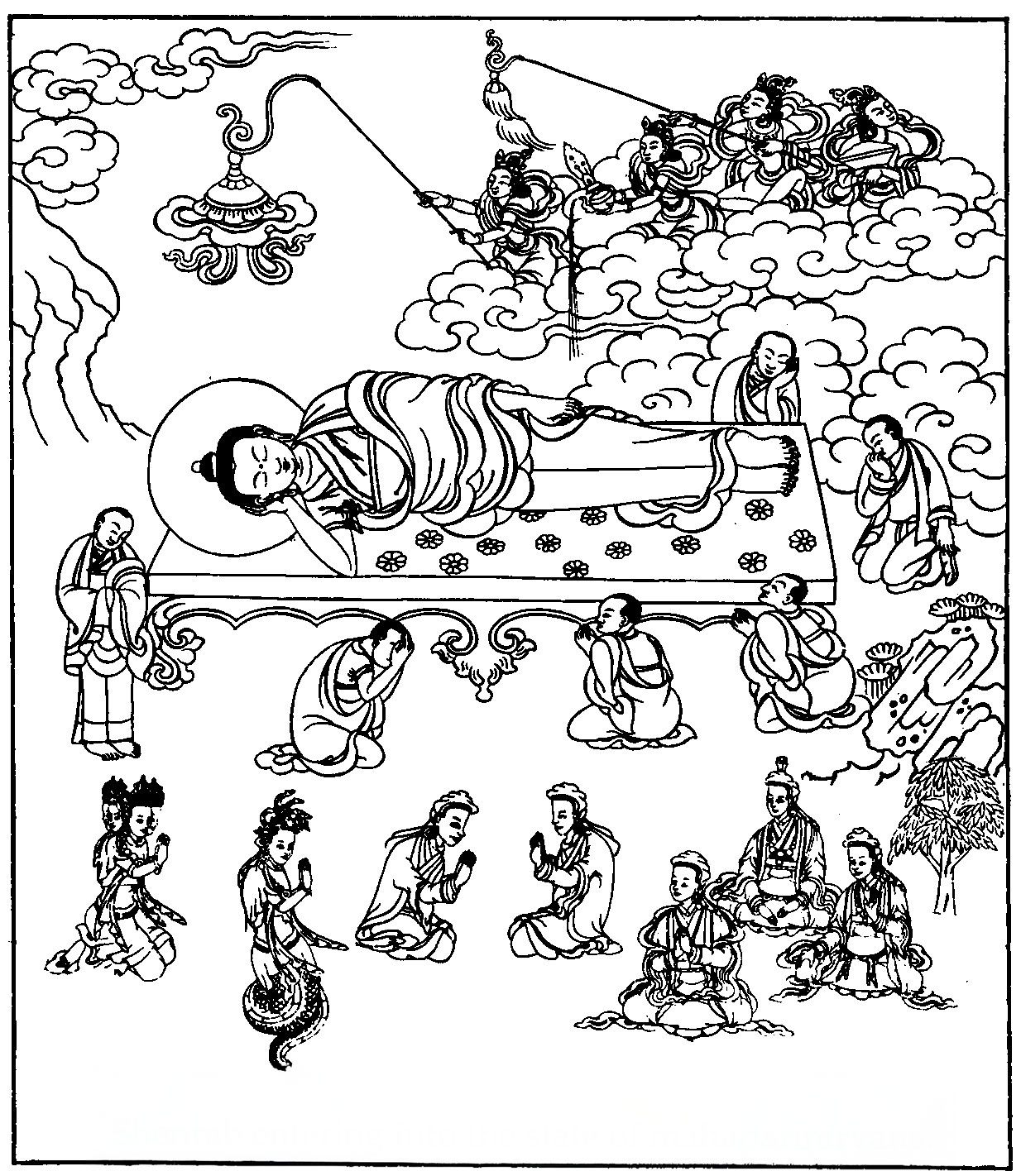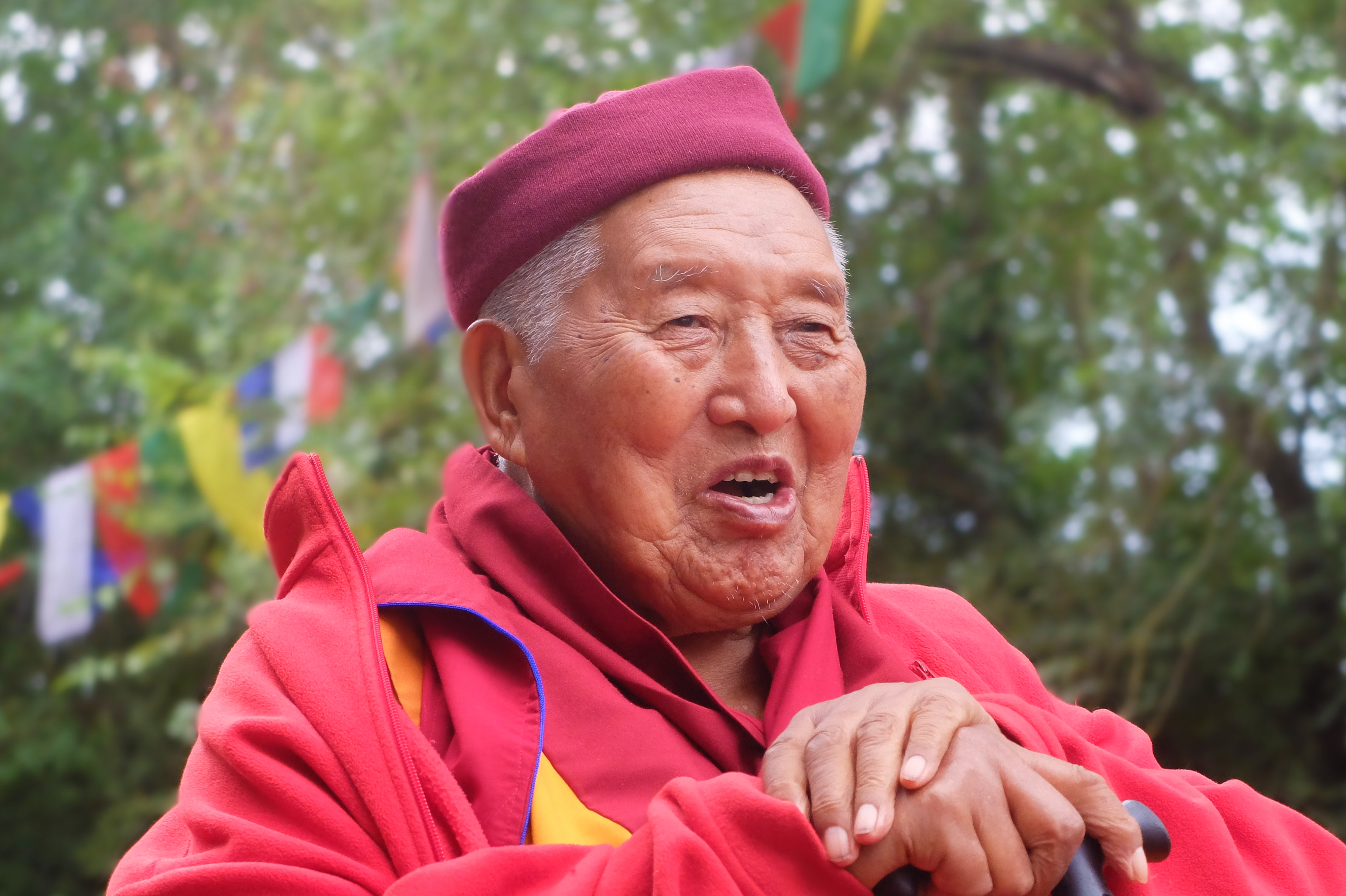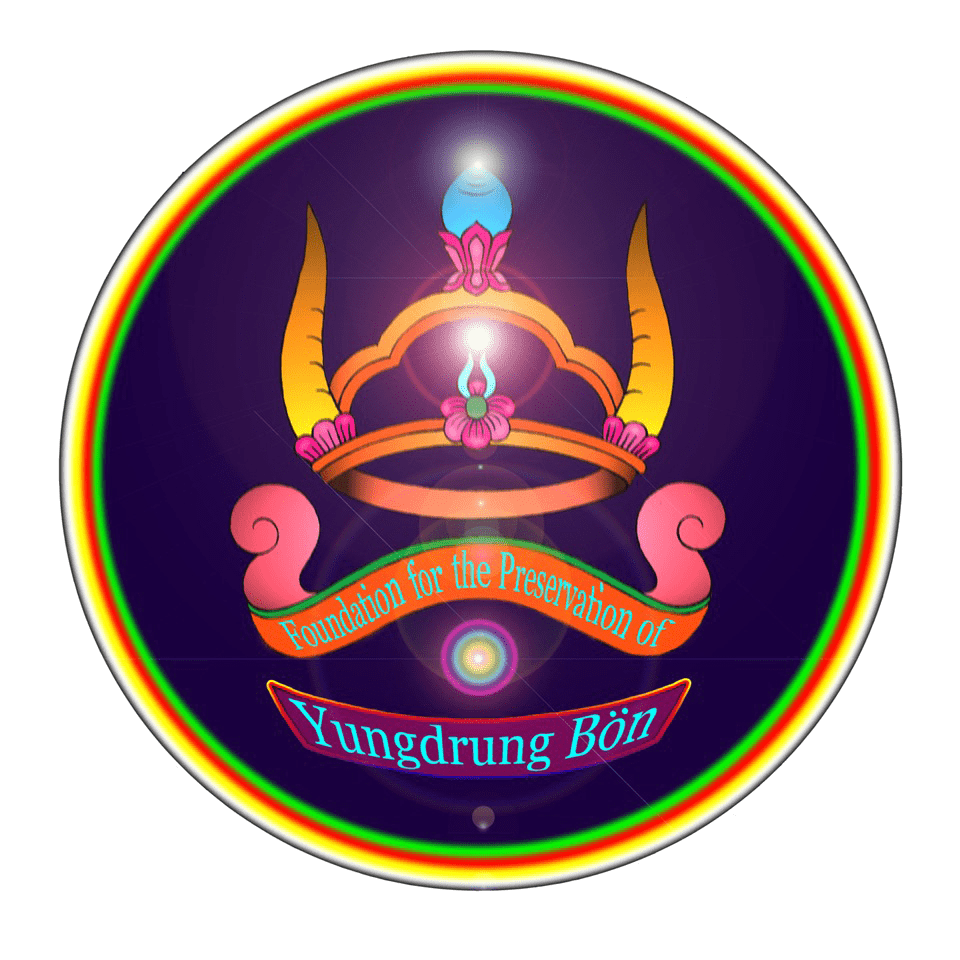9,842 Anniversary of Buddha Tönpa Shenrab Miwoche’s Parinirvana

Today, on the 30th day of the 9th month according to the Horda (Tib. hor-zla) calendar, we are celebrating the Anniversary of Buddha Tönpa Shenrab Miwoche (Tib. Rgyal-ba Ston-pa Gshen-rab Mi-bo-che) completing the Twelfth Deed, The Deed of Realisation (Tib. rnam-par grub-pa’i mdzad-pa), when he achieved nyangen ledepa (Tib. mya-ngan las’das-pa) or parinirvana in 7817 BC, 9,842 years ago. Through his life and teachings, the Buddha of Yungdrung Bön Tönpa Shenrab showed us the way from suffering to contentment, from strife to peace, and from anguish to ultimate Buddhahood. E Ma HO!

PRAYER TO TÖNPA SHENRAB MIWOCHE
ཨེ་མ་ཧོ།
E-MA-HO!
Wonderful!
མ་རིག་བློ་ཡི་མུན་སེལ་སྒྲོན་མའི་མཆོག།
MA-RIG LO YI MÜN-SEL DRON-MAI CHOG
O Supreme Lamp of Mind which clears away darkness,
ཉོན་མོངས་ནད་སེལ་འཕྲུལ་ངག་བདུད་རྩིའི་སྨན།
NYON-MONG NE-SEL THRUL NGAG DÜD-TSI-MEN
Your Speech is the supreme medicine which cures the afflictions of emotions.
འཁོར་བའི་འདམ་ཀེམས་ཡེ་ཤེས་ཉི་འོད་ཆེ།
KHOR-WAI DAM KEM YE-SHE NYI-WÖ-CHE
The light rays of your Wisdom dry the swamps of samsara.
རིགས་དྲུག་བདེར་འཁོད་ཨུད་འབར་རྒྱན་གཅིག་པོ།
RIG-DRUG DER KHÖ UD-BAR-GYEN CHIG-PO
You are the supreme flaming Precious Ornament, Guide of all beings in the Six Realms,
དགོས་འདོད་ལྷུན་གྲུབ་ནོར་བུ་རིན་པོ་ཆེ།
GÖ-DÖ HLUN-DRUB NOR-BU RIN-PO-CHE
And Precious Jewel which spontaneously fulfils all wishes and needs.
ས་དགུའི་དོང་སྤྲུག་ཐེག་དགུའི་བོན་སྟོན་པའི།
SA-GU DONG-TRUG THEG-GUI BÖN TÖN-PA
Teacher of the Nine Ways of Bön which dredge the depths of the nine levels of the Three Realms,
དུས་གསུམ་སངས་རྒྱས་ཀུན་གྱི་ངོ་བོ་ཉིད།
DÜ-SUM-SANG-GYE KUN GYI NGO-WO NYI
You are the essence of all Buddhas of the Three Times.
རྗེ་གཅིག་སྟོན་པའི་སྐུ་ལ་གུས་པས་བསྟོད།
JE-CHIG TÖN-PAI KU LA GU-PE TÖ
With great devotion, I praise you, O Great Supreme Lord Teacher!
Translated by Dmitry Ermakov
Twelfth Deed, The Deed of Realisation (Tib. Rnam-par grub-pa’i mdzad-pa)
In order to demonstrate the transient nature of cyclical existence (Tib. ‘khor-ba), while staying at the Mount of Nine-Layered Swastikas, Yungdrung Gutseg (Tib. G.yung-drung dug-rtseg), Tönpa Shenrab manifested sickness and became ill. Extremely worried, his followers and disciples begged him to move into the Trimon Gyalzhe palace (Tib. Khri-smon rgyal-bzhed). There, Tönpa Shenrab’s son, Tobu Bumsang (Tib. Gto-bu ‘bum-sangs), performed To rituals (Tib. gto) while his other son, Chebu Trishe (Tib. Dpud-bu khri-sehs), performed diagnostics and medical treatment. And so, in order to demonstrate the validity of relative truth (Tib. kun-rdzob bden-pa), Tönpa Shenrab recovered from the illness. After some time, however, he caused the illness to reappear. Although his followers beseeched him not to depart, he began giving the teaching on the liberation at the time of death. Then, in the eighty-second shen-year of his life, displaying countless miraculous and auspicious signs, Tönpa Shenrab went into parinirvana (Tib. mya-ngan las-‘das-pa) on the thirtieth day of the first Winter month of the Water Hare Year (i.e. 7817 BC). His body was cremated and the Eighteen-fold offering ritual (Tib. Cho-ga ‘phrin-las bco-brgyad) was performed, after which the holy relics were divided between the humans, the Hla-gods (Tib. lha) and the Lu water-gods as supports for their refuge.

“It is not enough to merely trust whatever Buddha said;
You must search for the meaning with your own mind.
Otherwise, the essential meaning can never be realised.
Therefore, it is imperative to verify Buddha’s words with your own reason.”
Advice from Buddha Tönpa Shenrab.
Translated orally by Drubdra Khenpo Tsultrim Tenzin. Edited by C. & D. Ermakovi
Teachings on the Nature of Buddha and the Meaning of Refuge
by Yongdzin Lopön Tenzin Namdak Rinpoche

“First of all you take Refuge (Tib. skyabs ‘gro) in the Buddha (Tib. sangs rgyas). Why is it useful to take Refuge in the Buddha? Because he can see whatever virtues you practise; he is All-Wise. So he sees whatever you have practised and accumulated with pure motivation and whatever effort you have put into accumulating merits on the way to Buddhahood, and so you can think and ask him for Refuge and he can protect you; he can do this.
What does Buddha mean? It is not easy to become a Buddha. You need to purify and release all your sufferings, miseries etc., you see, and once you have finally purified all sufferings, miseries, defilements and karmic traces then you achieve Buddhahood (Tib. mngon sangs rgyas pa). That is a Buddha. Whoever practises – including people from our Sangha here – if they practise and do everything properly and finally achieve (the result) then in the end they will be a new Buddha. That is Buddha.
In this case we talk about Tönpa Shenrab because our doctrines and Teachings all follow his doctrines and Teachings. At first you might see many things in the Tibetan tradition and think it is very complicated with so many different Yidams, Dakinis and Guardians, but in reality it is not complicated. Tönpa Shenrab achieved Buddhahood and at that time his mind became Dharmakaya (Tib. bon sku), but Dharmakaya is not separate from a being, you see, it is related with a body. In this case, the body is Shenlha Wökar. But he is not always as he appears on this picture; he is a real one and so he can move! This is only an imitation. It is like when someone takes a photo of us – we were smiling at that one time, but we are not always smiling – sometimes we are cross. [laughter] In the same way, Shenlha Wökar is not always sitting in this position – sometimes he can be peaceful. Or depending on what his followers need, sometimes he can have nine heads or hundreds of heads or something. He can be blazing with flames and wearing a cloak of human skin. He can show many things and what he shows, what form he takes, depends on other beings, if he needs to frighten them for instance. But he never loses his Compassion (Tib. snying rje, thugs rje) no matter what he shows or what form he takes.
Or sometimes we might think that he is always holding a consort, but that is not like human desire. In the Dharma we talk about Emptiness (Tib. stong pa) and Clarity (Tib. gsal ba) and about the Self-Aware Self (Tib. rang rig). Emptiness is related to the side of ‘Self’ [i.e. the ‘self’ is empty of inherent existence] while Clarity is related to Awareness (Tib. rig pa). These two are not separate (Tib. dbyer med, gnyis med) yet there are two qualities nevertheless, Emptiness and Clarity, and that is why there are these two – the Yidam and the Consort – which are not separate (Tib. yab yum). But don’t think they are like humans. They show these different emanations according to what the follower or practitioner needs at the time, but the source is Buddha. There is not only one Buddha. There are others, millions of Buddhas with the same qualities. But whoever becomes Buddha doesn’t merge into or become one mass, a kind of universal single Buddha. [I.e. although all Buddhas have the same qualities, they are not one universal enlightened mind but instead they all have fully realised the Nature of their own mind (Tib. sems nyid, gnas lugs]. I said that millions of Buddhas exist, not just one, but they all work for sentient beings. They only help sentient beings; that is their only work.”
Re-edited excerpt from Yongdzin Lopön Tenzin Namdak, Transcr. and ed. Carol Ermakova & Dmitry Ermakov, Bönchyod Gurim: Preliminary Practices for Zhang Zhung Nyen Gyud, Shenten Dargye Ling, 27th August – 1st September, 2006: pp. 49-50.
